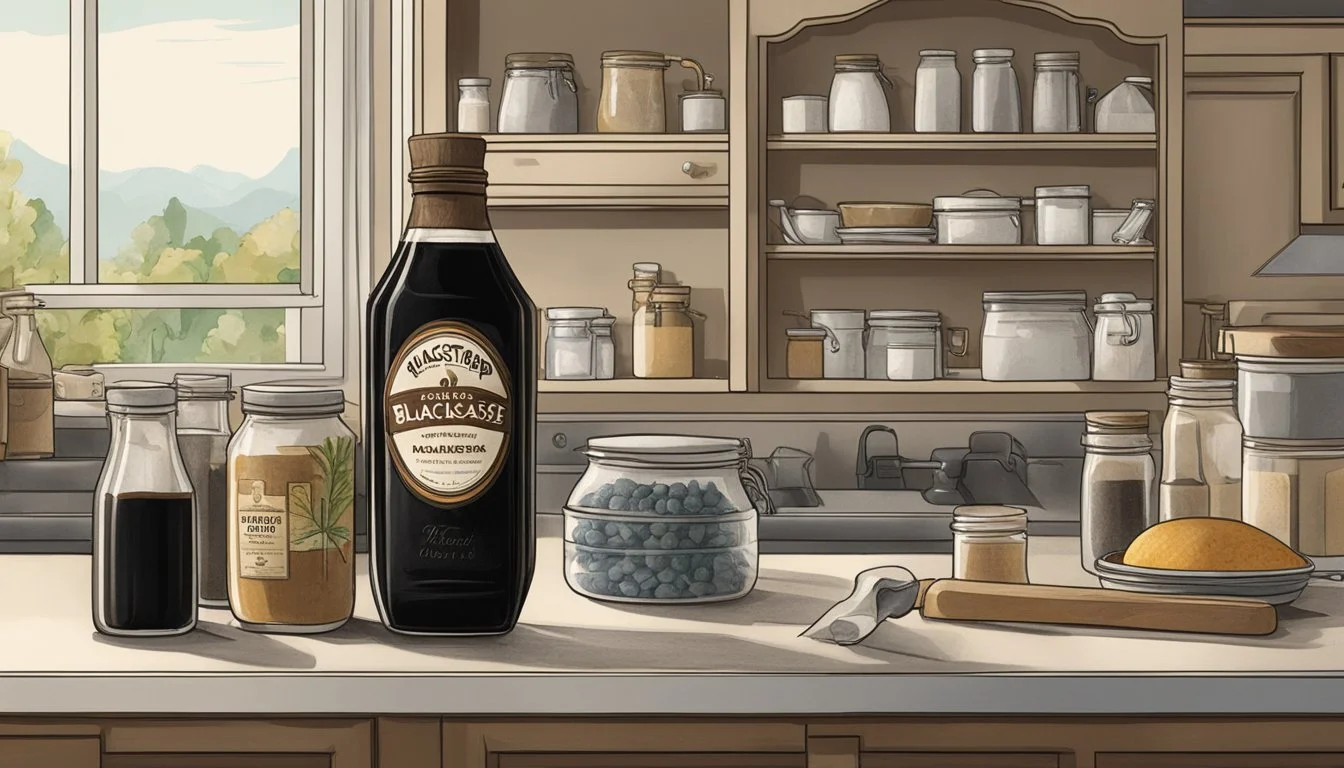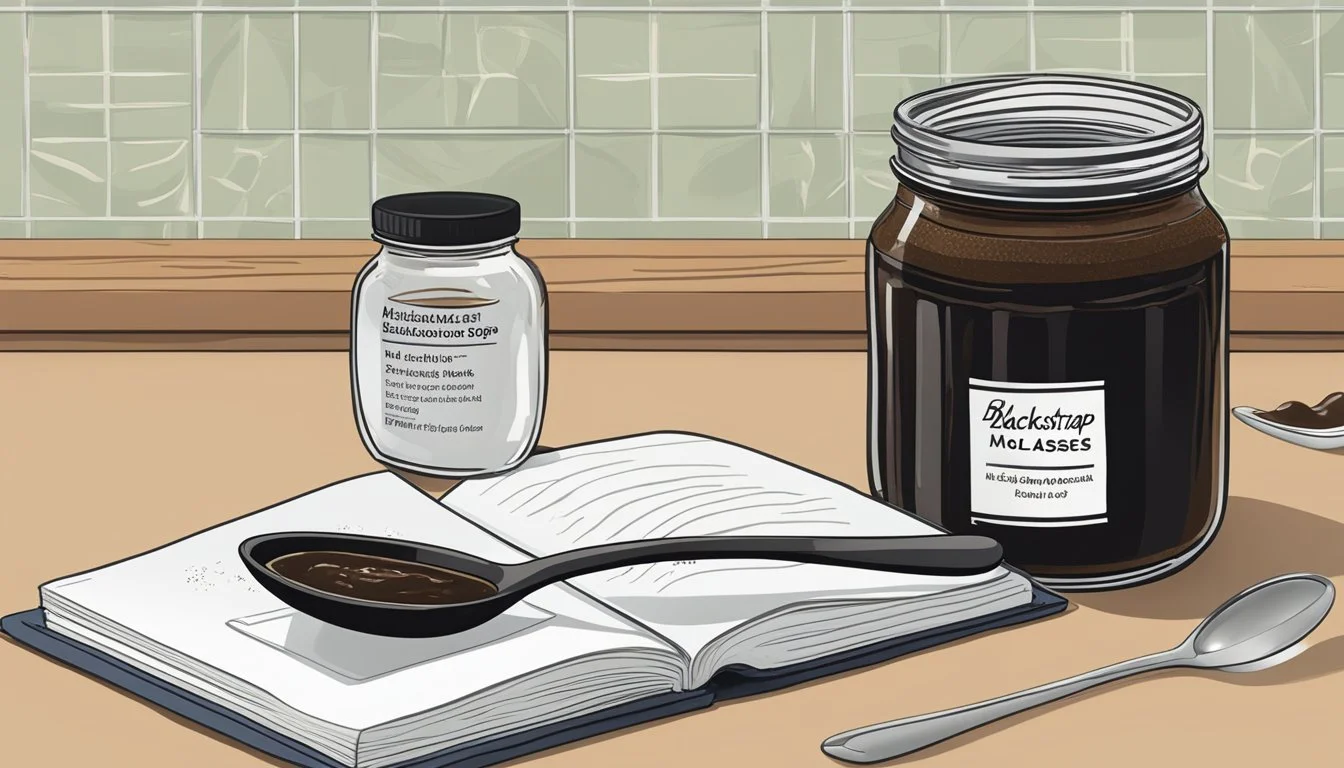Does Blackstrap Molasses Go Bad?
Shelf Life and Storage Tips
Blackstrap molasses, a nutrient-dense sweetener with a robust flavor, is a staple in many kitchens. While its rich nutrient content makes it a popular choice for health-conscious individuals, the question arises: does blackstrap molasses go bad?
The good news is that blackstrap molasses has an impressive shelf life if stored correctly. Keep it in a cool, dry, and dark place, and it can last for years. The high sugar content makes it difficult for microbes to survive, although, over time, its quality may diminish.
Despite its longevity, vigilance is necessary. Moldy molasses can occur if exposed to heat and humidity, rendering it unfit for consumption. Therefore, it's crucial to store it properly to enjoy its benefits for an extended period.
Understanding Blackstrap Molasses
Blackstrap molasses is a nutrient-rich syrup offering unique flavors and benefits compared to other types of molasses. This section will explore its characteristics, differences from other molasses types, and its nutritional value and health benefits.
Characteristics of Blackstrap Molasses
Blackstrap molasses is the final byproduct in the sugar refining process. It is typically darker, thicker, and more robust in flavor than lighter molasses forms. This syrup contains a higher concentration of vitamins and minerals due to its unrefined nature.
Key characteristics include:
Color: Dark, almost black
Flavor: Bitter, slightly sweet
Consistency: Thick and viscous
Uses: Often used in baking, cooking, and as a natural sweetener
It is a versatile ingredient valued for both its flavor and nutrient density.
Differences Between Types of Molasses
Molasses comes in different forms, each varying in flavor and nutrient content:
Light Molasses: Produced from the first boiling of sugar syrup. It has a lighter color and sweeter taste.
Dark Molasses: Results from the second boiling, darker and less sweet.
Blackstrap Molasses: The third boiling, darkest, and most nutrient-dense.
Additionally, molasses can be:
Sulfured: Treated with sulfur dioxide, which acts as a preservative but can affect taste.
Unsulfured: No sulfur added, resulting in a purer, more natural flavor.
Each type's specific qualities make them suitable for different culinary uses.
Nutritional Value and Health Benefits
Blackstrap molasses is renowned for its high nutritional value. Per tablespoon, it offers substantial amounts of key minerals:
Iron: Essential for red blood cells (about 3.5 mg, 19% DV)
Calcium: Important for bone health (200 mg)
Magnesium: Supports muscle and nerve function
This syrup also contains trace amounts of other vitamins and minerals, making it a healthy alternative to refined sugars. Its iron content makes it particularly beneficial for those with anemia.
Furthermore, as a natural sweetener, it helps reduce the glycemic load of foods, offering a slower release of sugar into the bloodstream.
By incorporating blackstrap molasses into their diet, individuals can enjoy both its rich flavor and a boost in essential nutrients.
Shelf Life and Preservation
Blackstrap molasses can last a long time if stored correctly. Understanding the factors that affect its shelf life, recognizing spoilage signs, and knowing the best storage methods are key to maintaining its quality.
Factors Affecting Shelf Life
Several factors influence the shelf life of blackstrap molasses. Temperature is crucial: keeping it in a cool, dry place helps prevent spoilage. Exposure to heat and humidity can decrease its longevity, leading to microbial growth.
A tightly sealed lid minimizes exposure to air and moisture, preserving its freshness. An unopened jar typically lasts longer than an opened one. It's important to note that preservatives are rarely used in molasses, making storage conditions even more critical.
Identifying Freshness and Spoilage Signs
To identify if blackstrap molasses is still fresh, check for any visible growths like mold or changes in odor. A noticeably different taste can also indicate spoilage.
Fermentation is another spoilage sign; it can make the molasses bubbly or give off a sour smell. Spoiled molasses might appear thicker or develop crystals. Regularly inspecting both opened and unopened jars helps maintain quality and ensures it's safe for consumption.
Proper Storage Methods
Proper storage extends the shelf life of blackstrap molasses significantly. Keep the jar in a cool, dry place away from direct sunlight to protect it from heat and humidity. Storing it in the pantry is common, but refrigeration can further ensure a consistent temperature.
Always use an airtight container with a secure lid to limit air exposure. If transferring molasses from its original packaging, choose a container designed to keep out moisture. By following these storage methods, blackstrap molasses can remain usable and retain its rich flavor for an extended period.
Storage Guidelines
Proper storage of blackstrap molasses can significantly extend its shelf life. Whether the jar is opened or unopened, maintaining the correct conditions is critical.
Ideal Conditions for Unopened Jars
Unopened jars of blackstrap molasses can last for years if stored correctly. The best place for storage is a cool, dry, and dark area, away from direct sunlight and heat sources.
Basements or pantries are ideal locations. Storing in these conditions helps prevent any degradation of the molasses and maintains its quality.
Manufacturers recommend keeping unopened molasses between 1-2 years for best quality, but it can last up to 10 years under optimal conditions. Ensuring the seal remains intact is also essential to prevent air from entering and contaminating the product.
Opened Jar Storage Practices
Once opened, blackstrap molasses has a shorter shelf life due to exposure to air.
It's essential to store it in a cool, dry place and away from direct sunlight to prevent spoilage. Keeping it in the pantry, well-sealed in its original container or transferred to an airtight container, is crucial to maintaining its freshness.
Opened jars typically last up to 6 months to 1 year if stored properly. Temperature fluctuations and humidity can adversely affect the molasses, so steady conditions are ideal.
Extending Shelf Life with Freezing
Although freezing blackstrap molasses isn't generally recommended, it can extend the shelf life if done correctly.
The primary concern with freezing is the potential alteration in texture, as freezing can cause molasses to separate. To freeze, transfer the molasses into an airtight container, leaving some space at the top for expansion.
Label the container with the date and freeze. When ready to use, thaw in the refrigerator and mix well before use. This method can make the molasses last beyond its typical shelf life, but it's not without risks of texture change.
By following these storage guidelines, one can enjoy the rich flavor of blackstrap molasses for an extended time, preventing waste and preserving quality.
Usage in Cooking and Baking
Blackstrap molasses offers a unique flavor and consistency, making it particularly suited for specific culinary uses. It should be used carefully as a substitute for other sweeteners due to its distinct taste profile.
Culinary Applications
Blackstrap molasses is often used in savory dishes like baked beans and pulled pork. It provides a robust, slightly bitter flavor that enhances the taste of these meals. In baking, it is vital in recipes like gingerbread, molasses cookies, and other types of baked goods where its strong flavor can be balanced with other ingredients.
This molasses type is also a staple in many traditional recipes to add depth of flavor. Importantly, it is not a direct substitute for light or dark molasses in recipes, as its taste can overpower more delicate dishes.
Substituting Other Sweeteners
When substituting blackstrap molasses for other sweeteners like brown sugar, honey, or maple syrup, one should be mindful of its strong, distinctive flavor. For every cup of blackstrap molasses, reduce other sweet components in the recipe to maintain balance. This molasses is more bitter than sweet compared to light molasses or other sugar-based sweeteners.
It can also influence the final consistency of the dish. Blackstrap molasses is thicker than many liquid sweeteners and can make baked goods denser. Always adjust liquid ratios to compensate and achieve the desired texture.
Impact on Flavor and Consistency
The strong, robust flavor of blackstrap molasses significantly impacts the taste of both sweet and savory dishes. It brings a slightly bitter note along with hints of licorice and sugar beets. This makes it ideal for recipes where intense flavors are desirable. In baking, using blackstrap molasses results in darker, richer baked goods.
It also affects the consistency of the final product. Recipes may become denser. Proper balancing with other ingredients is essential. Because of its thick nature, blackstrap molasses enhances the texture and moisture levels in dishes, which is particularly beneficial in meat-based recipes.
Using blackstrap molasses judiciously can add a unique dimension to your culinary creations.
Potential Spoilage and Food Safety
Recognizing signs of spoilage in blackstrap molasses is essential to preventing foodborne illness. Proper storage can mitigate microbial growth that leads to contamination.
Indicators of Spoiled Molasses
Odor: Spoiled molasses often emits a rancid or off odor instead of the usual sweet, slightly smoky aroma.
Color and Consistency: Fresh molasses has a smooth, syrupy viscosity. Spoiled molasses might show a change in color or become overly thick or crystallized.
Visual Signs: The presence of mold or unusual cloudy formations indicates spoilage. Mold growth can occur if molasses is exposed to air or stored improperly.
Mitigating Bacterial and Mold Growth
Storage Conditions: Store molasses in a cool, dry, and dark place. Extreme heat and humidity can accelerate spoilage.
Sealing: Use airtight containers to keep out contaminants and reduce the risk of mold growth. Moisture and air exposure can lead to bacterial growth and spoilage, impacting the molasses' quality.
Best-Before Date: Observe the "best before" date as molasses can degrade over time. Quality may diminish even if it appears fine.
Handling Contaminated Molasses
Inspection: Always inspect molasses before use. If mold, unusual smells, or significant changes in texture are detected, discard it.
Cleaning: If contamination is suspected, clean surrounding storage areas to prevent cross-contamination.
Safety Measures: Never ingest molasses showing signs of spoilage. Consuming contaminated molasses can lead to foodborne illness.
Handling molasses with care and awareness of spoilage indicators ensures it remains safe and beneficial for use.




